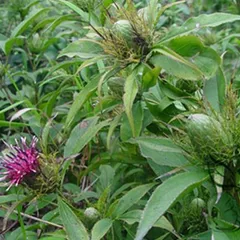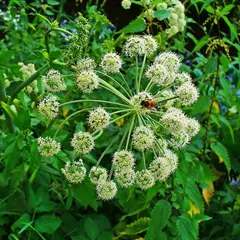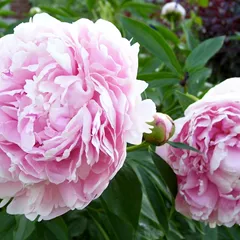Bell's palsy according to Chinese Medicine
The information provided here is not a replacement for a doctor. You shouldn't use it for the purpose of self-diagnosing or self-medicating but rather so you can have a more informed discussion with a professional TCM practitioner.
In Chinese Medicine, bell's palsy is sometimes associated with Yang Deficiency with Cold-Damp, a so-called "patterns of disharmony". Chinese Medicine sees the body as a system, not a sum of isolated parts. A "pattern" is when the system's harmony is disrupted. It is not equivalent to the Western concept of "disease" because both concepts arise from totally different ways of seeing the human body.
To understand whether someone's bell's palsy might be caused by the pattern Yang Deficiency with Cold-Damp, one needs to look for signs and symptoms associated with the pattern beyond what one might typically experience from bell's palsy alone. Indeed if bell's palsy is caused by Yang Deficiency with Cold-Damp, patients also experience symptoms such as generalized body pain, aching bones and joints, cold extremities and no thirst. Similarly, patients with Yang Deficiency with Cold-Damp typically exhibit choppy (Se), deep (Chen), minute (Wei) or slow (Chi) pulses as well as a tongue with thin white coating.
We've listed below a more detailed description of Yang Deficiency with Cold-Damp so that you can have a better understanding of where bell's palsy might find its root according to Chinese Medicine.
Once identified, patterns are often treated using herbal formulas. Drinking herbal infusions is the most common remedy in Chinese Medicine, together with acupuncture. Here we detail below four formulas that can help treat Yang Deficiency with Cold-Damp.
Yang Deficiency with Cold-Damp, a "pattern of disharmony" associated with bell's palsy

Prepared Aconite (Zhi Fu Zi) is the key herb for Fu Zi Tang, a formula used for Yang Deficiency with Cold-Damp
Yang Deficiency with Cold-Damp
Pulse type(s): Choppy (Se), Deep (Chen), Minute (Wei), Slow (Chi)
Tongue coating: Thin white coating
Recommended herbal formula: Fu Zi Tang
Symptoms: No thirst Cold extremities Generalized body pain Aching bones and joints Aversion to cold - especially at the back
Bell's palsy might be due to Yang Deficiency with Cold-Damp if the condition is paired with typical pattern symptoms such as generalized body pain, aching bones and joints, cold extremities and no thirst. Similarly, patients with Yang Deficiency with Cold-Damp typically exhibit choppy (Se), deep (Chen), minute (Wei) or slow (Chi) pulses as well as a tongue with thin white coating.
The four herbal formulas that might help with bell's palsy



The top herbs in Fu Zi Tang are Prepared Aconite (Zhi Fu Zi), Atractylodes Rhizomes (Bai Zhu) and Poria-Cocos Mushrooms (Fu Ling)
Fu Zi Tang
Source date: 220 AD
Number of ingredients: 5 herbs
Key actions: Warms the Meridians. Assists the Yang. Dispels Cold. Transforms Dampness.
Why might Fu Zi Tang help with bell's palsy?
Because it is a formula often recommended to help treat Yang Deficiency with Cold-Damp, a pattern sometimes associated with bell's palsy. If it looks like you might suffer from Yang Deficiency with Cold-Damp, this formula might help (although please seek confirmation with a professional practitioner beforehand).



The top herbs in Shu Jing Huo Xue Tang are Dong Quai (Dang Gui), White Peony Roots (Bai Shao) and Szechuan Lovage Roots (Chuan Xiong)
Shu Jing Huo Xue Tang
Source date: 1587 AD
Number of ingredients: 16 herbs
Key actions: Expels Wind Damp from the Channels. Invigorates Blood. Unblocks the channels.
Why might Shu Jing Huo Xue Tang help with bell's palsy?
Because it is a formula often recommended to help treat , a pattern sometimes associated with bell's palsy. If it looks like you might suffer from , this formula might help (although please seek confirmation with a professional practitioner beforehand).



The top herbs in Bu Yang Huang Wu Tang are Milkvetch Roots (Huang Qi), Dong Quai (Dang Gui) and Szechuan Lovage Roots (Chuan Xiong)
Bu Yang Huang Wu Tang
Source date: 1830 AD
Number of ingredients: 7 herbs
Key actions: Tonifies Qi. Invigorates Blood. Unblocks the channels.
Why might Bu Yang Huang Wu Tang help with bell's palsy?
Because it is a formula often recommended to help treat , a pattern sometimes associated with bell's palsy. If it looks like you might suffer from , this formula might help (although please seek confirmation with a professional practitioner beforehand).



The top herbs in Huang Qi Gui Zhi Wu Wu Tang are Milkvetch Roots (Huang Qi), Cinnamon Twigs (Gui Zhi) and White Peony Roots (Bai Shao)
Huang Qi Gui Zhi Wu Wu Tang
Source date: 220 AD
Number of ingredients: 5 herbs
Key actions: Augments the Qi. Warms and harmonizes the channels. Unblocks painful obstruction .
Why might Huang Qi Gui Zhi Wu Wu Tang help with bell's palsy?
Because it is a formula often recommended to help treat , a pattern sometimes associated with bell's palsy. If it looks like you might suffer from , this formula might help (although please seek confirmation with a professional practitioner beforehand).
Symptoms related to bell's palsy
Generalized body pain Aching bones and joints Cold extremities No thirst Aversion to cold - especially at the back






